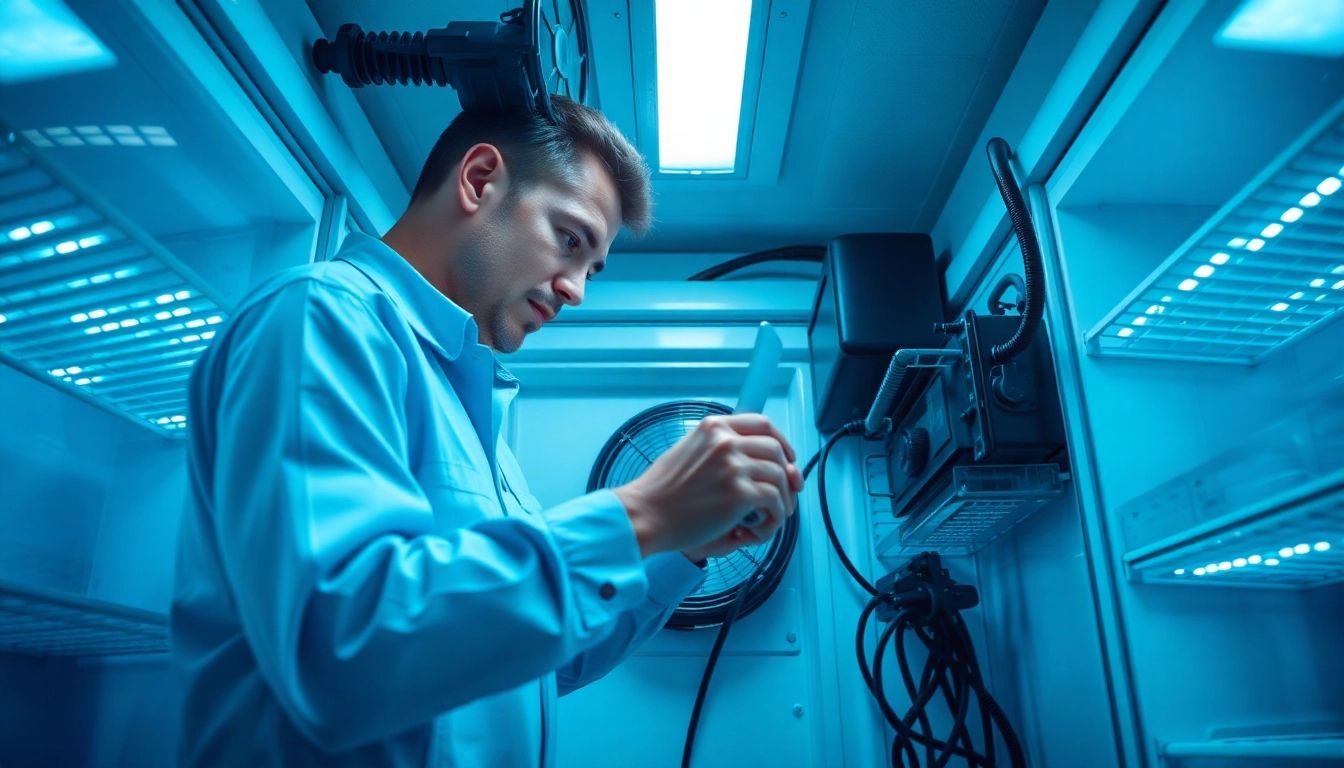Understanding Walk in Freezer Repair Needs
Common Problems Encountered
Walk-in freezers serve as essential components in various commercial establishments, including restaurants, supermarkets, and warehouses. However, like any mechanical system, they can encounter various issues. Common problems faced by walk-in freezers include:
- Temperature Fluctuations: A walk-in freezer should maintain a consistent temperature. Fluctuations can indicate issues with refrigeration efficiency or component failures.
- Energy Inefficiency: When components such as fans or compressors falter, energy consumption can increase, leading to higher operational costs.
- Frost Buildup: Excessive frost accumulation can obstruct airflows, significantly affecting performance and temperature maintenance.
- Door Seal Problems: Damaged or worn door seals can cause cold air to leak, leading to inefficiency and increased energy costs.
Signs Your Freezer Requires Attention
Determining when to take action regarding your walk-in freezer’s performance can save significant time and resources. Here are some red flags that should prompt immediate inspection:
- Unusual Noises: If you hear loud or inconsistent noises from the compressor or fan, it may indicate mechanical failures.
- High Energy Bills: A sudden spike in energy costs may suggest that your freezer is working harder than necessary, possibly due to inefficiency.
- Frequent Cycling: If your freezer is constantly turning on and off, it may have a malfunctioning thermostat or compressor that requires attention.
- Water Leaks: Puddles of water either inside or outside the unit can suggest problems with drainage or insulation.
Importance of Timely Repairs
Addressing walk-in freezer issues promptly is crucial for preserving inventory quality and reducing overhead costs. Delaying repairs can lead to:
- Food Spoilage: Any rise in temperatures can quickly compromise food safety, leading to wastage and potential financial losses.
- Increased Repair Costs: Minor issues can escalate if neglected, resulting in comprehensive repairs that are significantly more expensive than timely interventions.
- Loss of Revenue: Outages may lead to equipment downtime, directly impacting your business operations and profits.
Key Components of Walk-in Freezers
Compressor Functionality
The compressor is the heart of the refrigeration system, responsible for maintaining optimal temperatures by circulating refrigerant. It compresses the refrigerant gas and moves it through the system, enabling heat exchange at the evaporator and condenser coils:
Understanding compressor operation can aid in troubleshooting issues. A failing compressor may result in insufficient cooling, and recognizing early signs can prevent extensive damage.
Evaporator and Condenser Roles
Walk-in freezers utilize both evaporator and condenser coils to regulate temperature effectively. The evaporator absorbs heat inside the freezer. This process cools the air, while the condenser releases heat absorbed from the evaporator back into the environment. Problems in these coils can significantly impact the overall efficiency:
For example, dirty or clogged coils can restrict airflow, reducing the cooling capacity and making the compressor work harder to maintain temperature.
Insulation and Door Seal Importance
Proper insulation is vital for energy efficiency in walk-in freezers. Quality insulation minimizes heat transfer, ensuring that refrigerators and freezers maintain the desired temperature without unnecessary energy costs:
Moreover, effective door seals prevent cold air leakage, which can occur through worn or damaged seals. Regular checks and replacements can ensure the integrity of the freezer’s environment.
Maintenance Practices to Prevent Breakdowns
Regular Cleaning Protocols
Establishing cleaning protocols is central to extending the life of walk-in freezers. Regular cleaning of condenser coils, evaporator coils, and areas around the compressor reduces the accumulation of dirt and debris:
Moreover, cleaning the door seals and ensuring leak tests are performed can contribute to maintaining efficiency.
Temperature Monitoring Techniques
Automated temperature tracking systems can provide real-time data on the conditions within your walk-in freezer. Regular monitoring can help identify temperature spikes or dips, suggesting potential problems walk in freezer repair might be needed:
Implementing alarms to alert staff of temperature irregularities can ensure timely corrective actions, maintaining food quality and safety.
Scheduled Professional Inspections
Regular professional inspections are crucial in identifying potential problems before they escalate. Trained technicians can perform comprehensive checks on all the key components of the walk-in freezer:
Implementing a preventive maintenance plan can lead to reduced downtime, lower repair costs, and enhanced operational efficiency.
Cost Considerations in Walk in Freezer Repair
Average Pricing for Common Repairs
The cost of walk-in freezer repairs can vary significantly based on the problem type. Here are some average costs associated with common repairs:
- Compressor Replacement: Typically ranges between $1,000 to $3,000, depending on the compressor brand and model.
- Refrigerant Recharge: Usually costs around $200 to $500 depending on the type and amount needed.
- Door Seal Replacement: Can be relatively inexpensive, ranging from $100 to $300 depending on the number of seals needed.
- Electrical Issues: Repairing wiring or electrical components can range from $200 to $800, depending on the complexity of the issues.
Factors Influencing Repair Costs
Several factors can influence the overall costs of walk-in freezer repairs:
- Type of Repair Required: More complex repairs will generally cost more.
- Location: Regional labor rates can affect the cost of service.
- Age of Equipment: Older systems may require custom parts, impacting repair costs.
- Urgency of Service: Emergency repairs can incur higher rates compared to scheduled services.
Repair vs. Replacement: Making the Decision
Determining whether to repair or replace a malfunctioning walk-in freezer depends on various criteria:
- Cost of Repair: If repair costs exceed 50% of a new unit’s cost, replacement may be more economical.
- Age of the Freezer: Equipment older than 15 years may not be worth the investment in repairs.
- Efficiency Improvements: New models often come with energy-efficient technologies that lead to savings over time.
Finding Reliable Walk in Freezer Repair Services
Researching Local Technicians
When searching for repair services, local technicians with experience in commercial refrigeration and walk-in freezer repair are ideal. Look for companies that:
- Carry licenses and insurance to protect against liability.
- Possess certifications related to HVAC and refrigeration systems.
- Are known for their customer service and support.
Asking the Right Questions
When contacting technicians or repair services, consider asking the following questions:
- What experience do you have with walk-in freezers?
- Can you provide references from similar repair jobs?
- What kind of warranty do you offer on both parts and labor?
- How quickly can you respond to emergency repair requests?
Evaluating Service Reviews and Ratings
Before hiring any service, it’s vital to check online reviews and ratings. Reliable platforms such as Google, Yelp, and industry-specific forums can provide insights into customer experiences:
Look for patterns in feedback, such as responsiveness, technical expertise, and satisfaction levels. A company with a solid reputation and positive reviews is more likely to provide the quality service you need.



